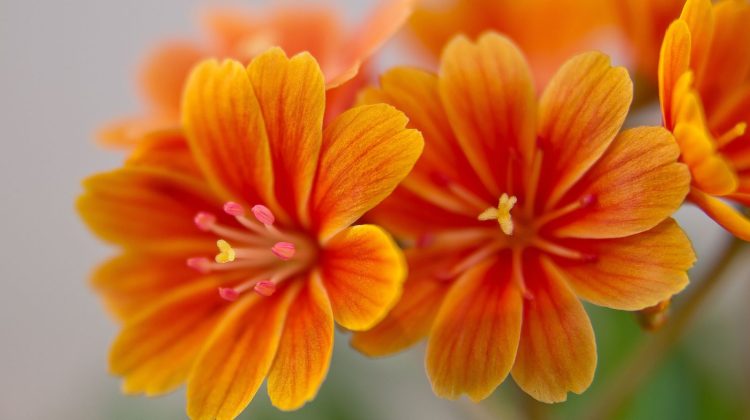
Brightening your garden with a splash of vivid color can transform it into a joyful haven of beauty.
Orange flowers are particularly effective at injecting that pop of color you’re yearning for.
Whether you have a sunny spot that’s perfect for full sun lovers, or a patch that gets a mix of shade and light, there’s an orange bloom suited to your needs.
In spring and summer, these fiery-hued blossoms come to life, adding vibrancy and charm to your landscape.
Easy to grow and maintain, orange flowers can be the highlight of your home garden.
They not only serve as a stunning visual treat, but some varieties invite pollinators, enriching your garden’s ecosystem.
From the subtle to the show-stopping, orange flowers are diverse enough to suit any gardener’s preferences and care levels.
As the seasons change, see your space flourish with warmth and color that these beautiful blooms bring.
In this article, we'll cover
- 1. Marigolds (Tagetes)
- 2. California Poppies (Eschscholzia californica)
- 3. Zinnias (Zinnia elegans)
- 4. Tulips (Tulipa)
- 5. Canna Lilies (Canna indica)
- 6. Daylilies (Hemerocallis)
- 7. Dahlias (Dahlia)
- 8. Mexican Sunflowers (Tithonia rotundifolia)
- 9. Lantana (Lantana camara)
- 10. Bird of Paradise (Strelitzia reginae)
1. Marigolds (Tagetes)
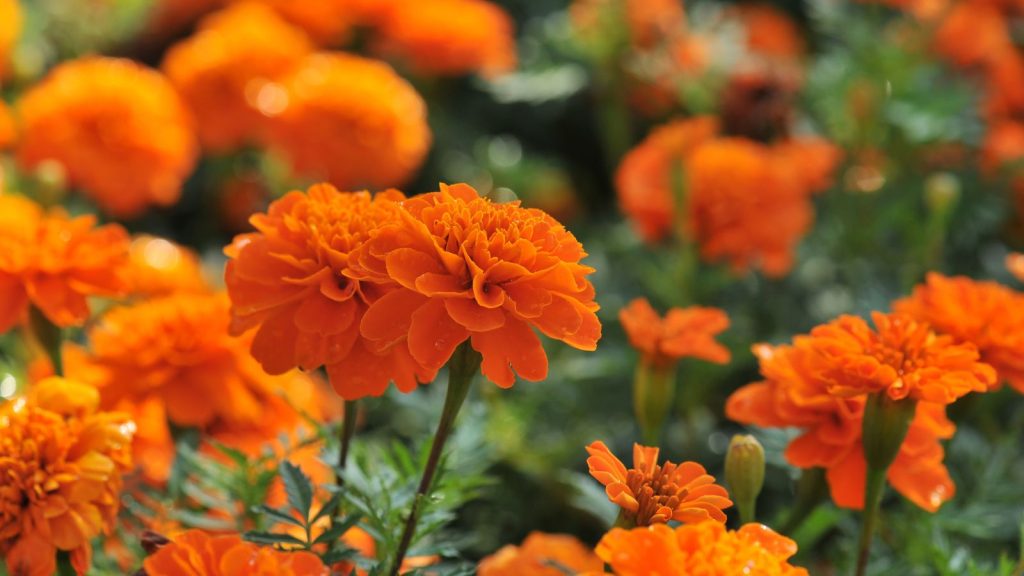
Marigolds are a cheerful addition to any garden space. With their vibrant orange tones, they’ll brighten up your flower beds or containers with minimal fuss. Here’s what you need to know:
- Variety: You’ll find marigolds in a range of orange shades, from soft pastels to bold, fiery hues that captivate the eye.
- Care: They are quite low-maintenance and are known for their resilience against many common garden pests.
- Growth: Expect them to reach heights of up to 24 inches and widths ranging from 12 to 18 inches, depending on the variety.
To ensure the best growth, plant marigolds in well-draining soil and position them where they’ll receive ample sunlight.
Excellent for beds, borders, and containers, they’re versatile and can be used in diverse garden designs.
Plus, their aromatic leaves can help deter unwelcome insects, making them great companions for your vegetable patch.
When in bloom, these hardy flowers also become a sanctuary for pollinators, inviting bees and butterflies to your garden.
Enjoy the dual benefits of a colorful display and a natural pollinator attractor with marigolds!
2. California Poppies (Eschscholzia californica)
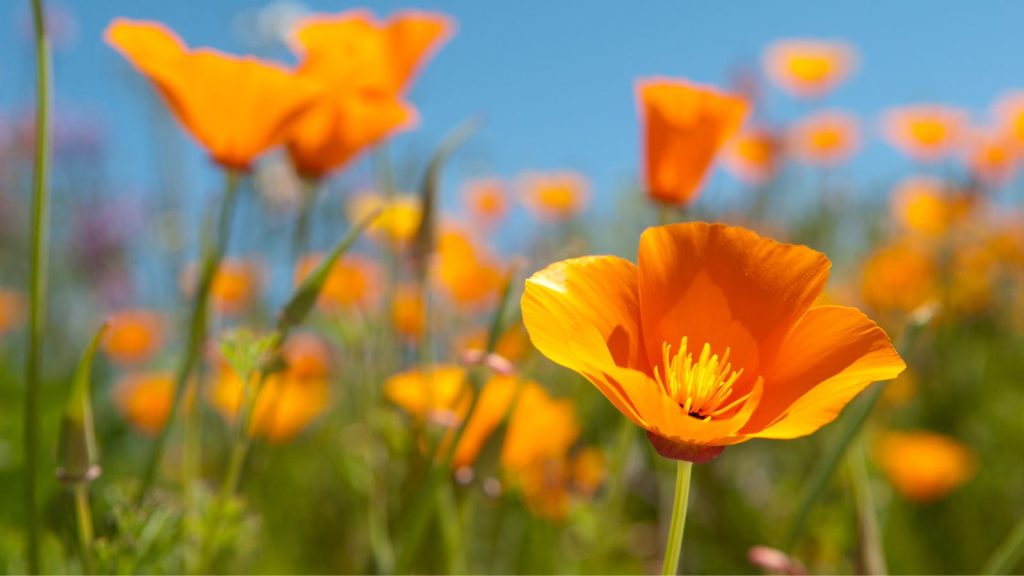
These vibrant wildflowers, native to North America, boast cheerful, cup-like orange blossoms that are sure to brighten up your garden.
Known for their resilience, California Poppies are perfectly adapted to thrive with minimal care. Here’s what you should know to successfully grow these gems:
- Sunlight: They love a sunny spot. Aim to give them at least six hours of direct sunlight a day.
- Soil: Opt for sandy, well-drained soil. They are not fussy about nutrients.
- Water: They are drought-resistant, so water them sparingly. Only occasional watering is needed.
Remember, these colorful flowers are not just drought-tolerant but also tend to reseed themselves, which can provide your garden with yearly bursts of color.
Delight in the simple joy that Eschscholzia californica brings with minimal effort on your part.
Just sit back and watch your garden come alive with the warm glow of these orange beauties!
3. Zinnias (Zinnia elegans)
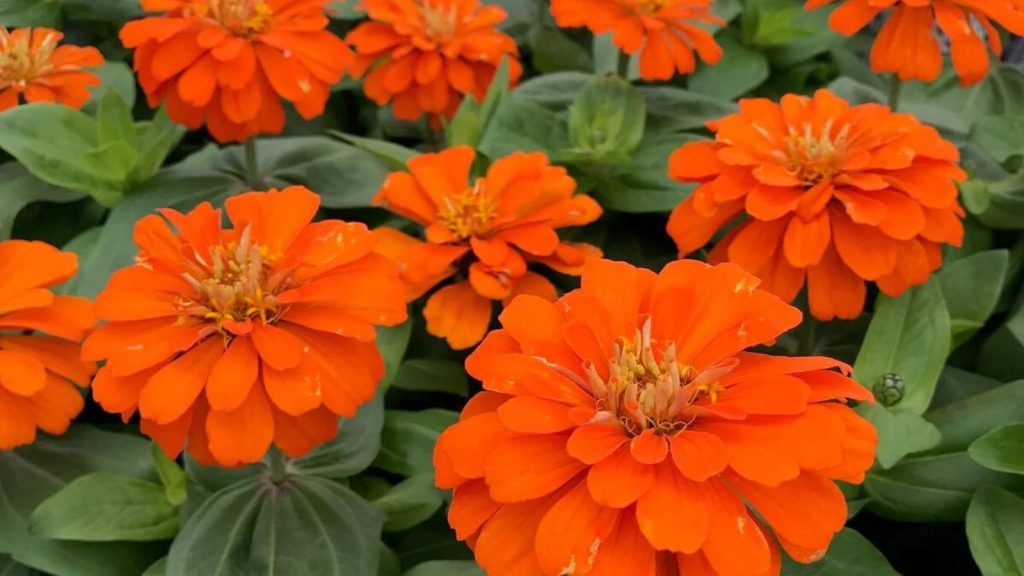
Zinnias offer a vibrant splash of color with their diverse hues, including the ever-captivating orange.
They’re particularly loved for their ability to bloom profusely throughout the season, bringing continual cheer to your garden.
When planting Zinnias:
- Select a spot with ample sunlight.
- Ensure the soil drains well.
- Space seeds or seedlings about 6-18 inches apart to give each plant room to flourish.
Caring for Zinnias is straightforward:
- Water consistenly to keep the soil evenly moist.
- Deadhead spent blooms to promote further flowering.
- Look out for common pests and manage them promptly.
With your care, Zinnias will delight with bursts of orange, adding warmth and brightness to your outdoor space.
4. Tulips (Tulipa)
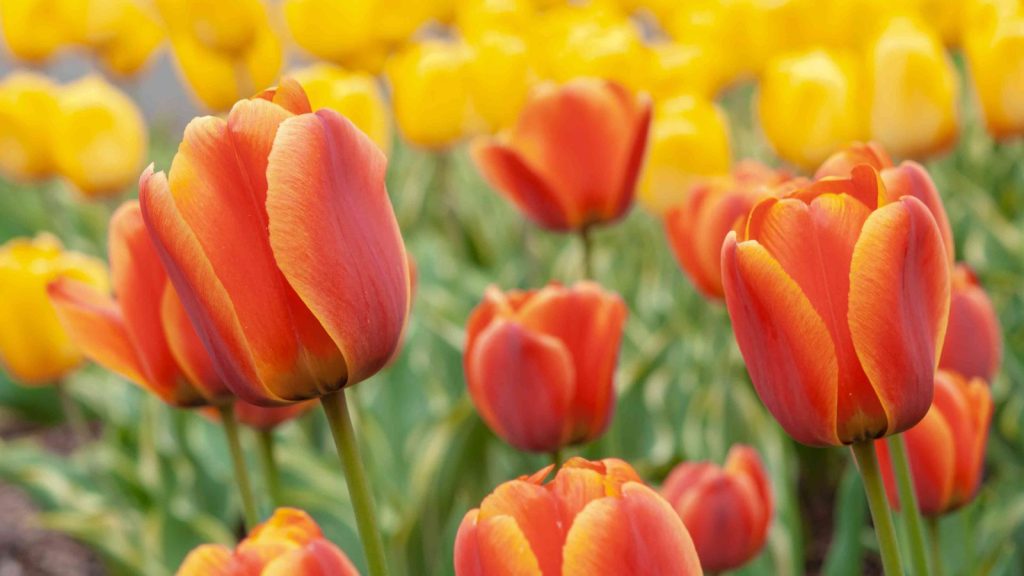
Tulips are renowned for their vibrant hues, and the orange varieties stand out with their exceptional brightness.
They make springtime gardens come alive with their vivid blossoms.
Here’s a glimpse into the charm of orange tulips for your garden:
- Darwin Hybrid tulips boast large, egg-shaped blossoms with golden-orange petals that are often outlined with a richer, darker tone. In the spring garden, these tulips present a robust and ruffled green foliage, supported by notably lengthy stems, ideal for a joyful front yard display or incorporating into a cutting garden.
- Tulipa ‘Je t’Aime’ is a mid to late-season bloomer, somewhat elusive but consistently admired. Thriving in well-draining soil and full sun, these tulips grow up to 14-16 inches tall, with a spread of approximately 5 inches, and are suited for USDA hardiness zones 3-9. Learn about their unique beauty on A-Z Animals.
Adding orange tulips to your garden ensures a dazzling splash of spring color that’s both warm and inviting.
5. Canna Lilies (Canna indica)
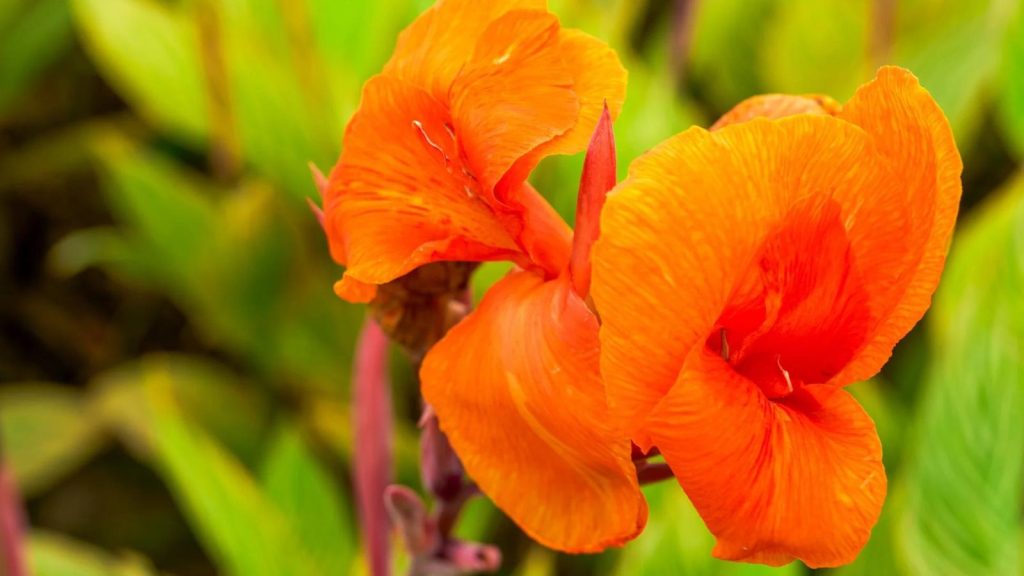
Canna Lilies bring a touch of the tropics to your garden with their large, banana-like leaves and show-stopping flowers.
If you’re aiming to infuse your outdoor space with vivid hues, the orange varieties are a perfect choice.
- Sun Requirements: Full sun to thrive
- Soil: Rich, well-draining
- Watering: Regularly to keep soil moist
- Blooming Season: Mid-summer to fall
These perennials can reach up to 10 feet tall, serving as a stunning backdrop or as solitary highlights in your garden.
When planting, remember to space them out based on their size, allowing ample room for growth.
- Planting Depth: 4 inches
- Spacing:
- Dwarf: 18 inches apart
- Medium to Standard: 2 feet apart
- Tall Varieties: 3 feet apart
Canna Lilies are hardy across zones 3-11, making them a versatile addition to a variety of landscapes.
With proper care, you’ll enjoy the flamboyant blooms of your orange Canna Lilies and their capacity to turn any garden into a colorful retreat.
6. Daylilies (Hemerocallis)
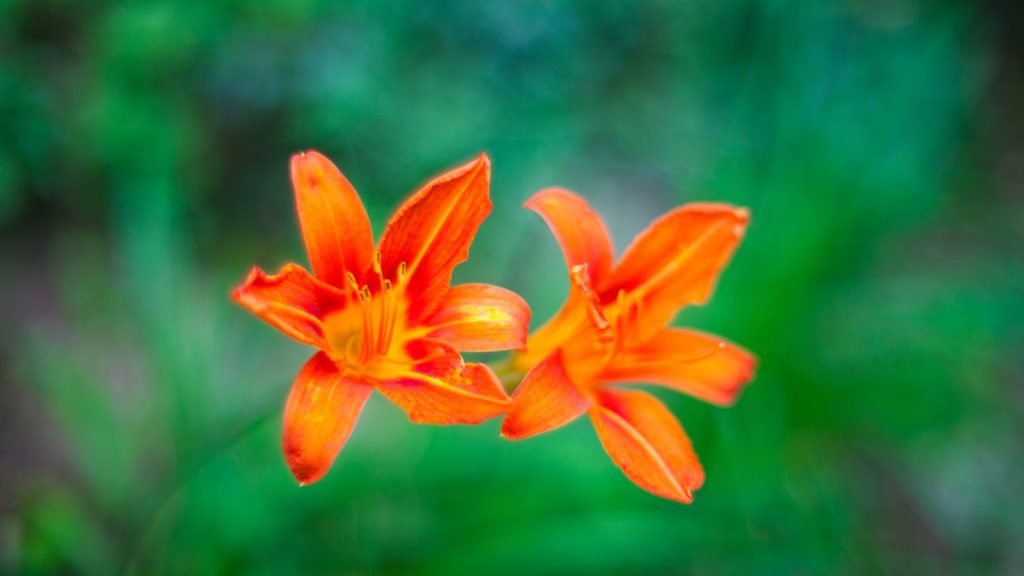
Daylilies, belonging to the genus Hemerocallis, are robust perennials that will brighten up your garden with their vibrant orange hues.
If you’re seeking a pop of color and long-lasting blooms, consider varieties like ‘Mauna Loa’ or ‘Frans Hals’—their eye-catching orange blossoms are a joy to behold.
- Growing Season: These beauties thrive in a range of climates and are known for their extended flowering period.
- Maintenance: With minimal care, daylilies reward you with a profusion of flowers, making them a favorite among novice and experienced gardeners alike.
- Blooming Cycle: Each flower lasts only a day, but don’t worry, plenty of buds on each plant ensure a continuous display of color.
To maximize the impact of your daylilies, group them together or create a border for a stunning visual effect.
Their hardiness and striking color make them a must-have for any garden enthusiast looking to inject a warm, inviting vibe into their outdoor space.
7. Dahlias (Dahlia)
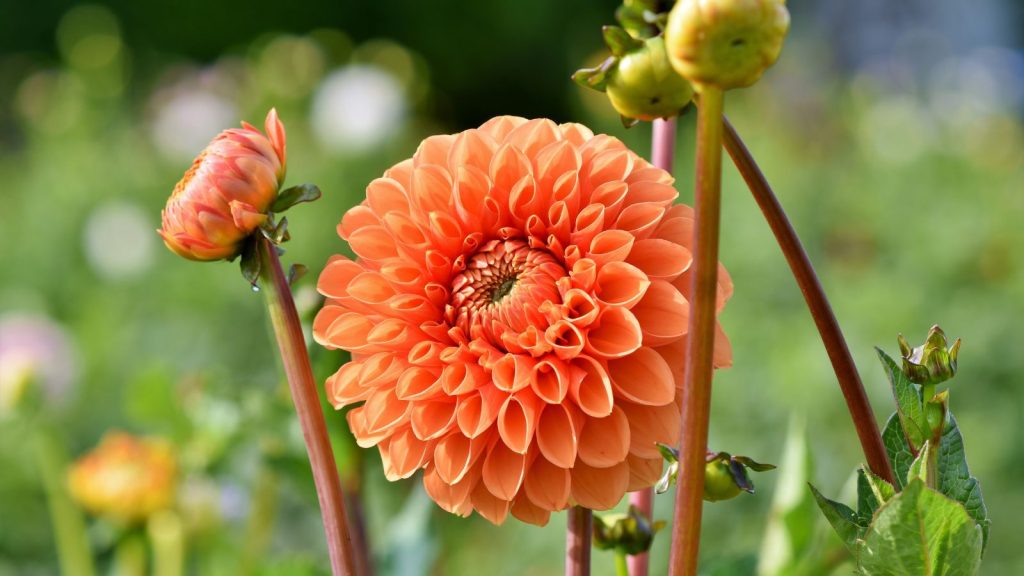
Dahlias are a spectacular choice for your garden, offering a splendid spectrum of oranges. The flowers provide an array of shapes and sizes, which means there’s always one to fit perfectly into your landscape design.
- Peachy Hues: Soft and subtle, these dahlias bring a gentle warmth.
- Bold Fiery Shades: They make a statement with their intense, vibrant colors.
Planting Tip: Dahlias thrive in well-drained soil and with plenty of sunlight.
They are generally planted in the spring and will bloom from midsummer through fall, giving your garden an extended season of color.
Consider mixing these vivacious blooms in borders or as stand-alone features in containers for an eye-catching display.
Their presence not only elevates the visual appeal of your garden but can also attract pollinators like bees and butterflies.
8. Mexican Sunflowers (Tithonia rotundifolia)
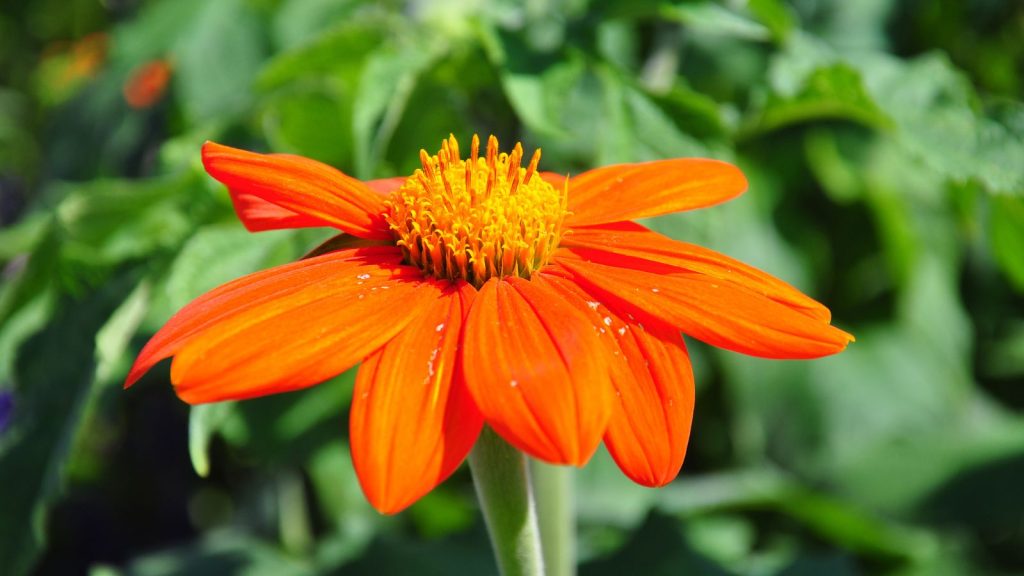
Bright and bushy, Mexican Sunflowers attract both butterflies and hummingbirds with their vibrant daisy-shaped flowers.
Growing them is a breeze, and they quickly become a tall spectacle in the garden.
- Height: Can tower over your flower beds, often reaching several feet.
- Flowers: Large, radiant orange-yellow blooms reminiscent of sunny daisies.
Planting Tips:
- Sunlight: They thrive in full sunlight.
- Soil: Plant in well-drained soil.
- Space: Allow room for growth; they’re known to spread out.
Your garden will light up with their showy flowers, bringing a dynamic display of wildlife right to your backyard.
These stunners make for a joyful addition to any garden space, inviting an array of glittering visitors.
9. Lantana (Lantana camara)
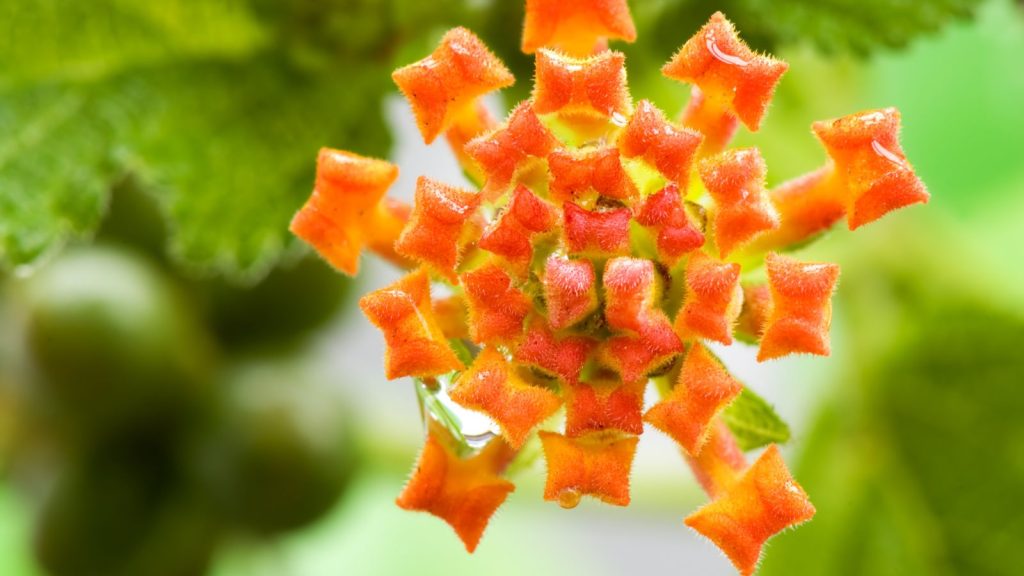
Lantana is a vibrant addition to any garden, known for its radiant orange blooms that gather in eye-catching clusters.
These fiery flowers not only add a burst of color but also welcome a myriad of butterflies to your outdoor space, making it a lively hub of activity.
Thriving in the warmth, Lantana is impressively heat-resistant, allowing you to enjoy its beauty even on the sunniest days.
To maintain your Lantana’s dazzling display, place it in a spot where it can bask in the sunlight and ensure the soil is well-drained to prevent waterlogging.
Your efforts will be rewarded with a garden that not only looks stunning but serves as a sanctuary for beautiful butterflies.
10. Bird of Paradise (Strelitzia reginae)
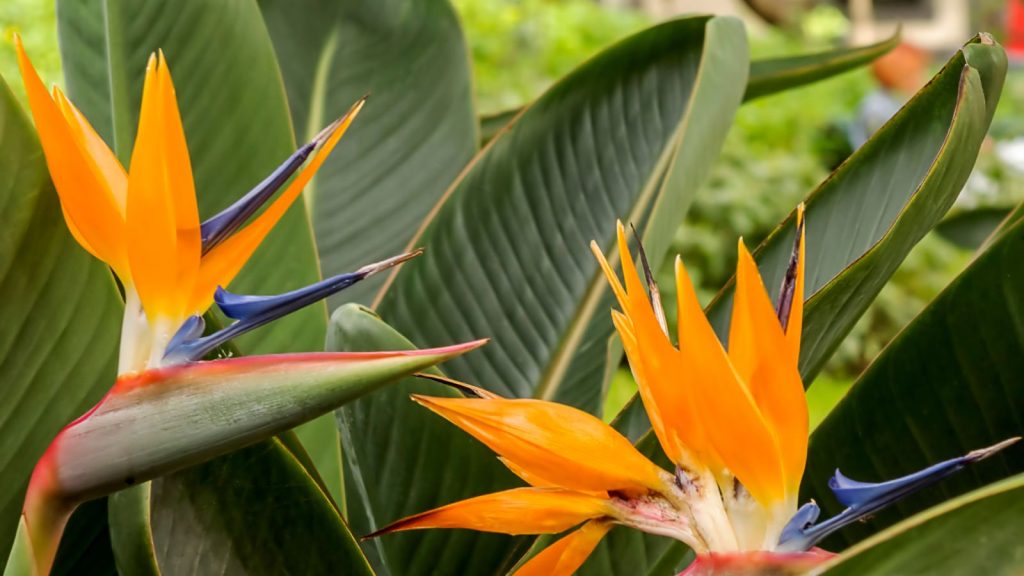
Transform your garden into a tropical oasis with the Bird of Paradise (Strelitzia reginae).
Famous for its vibrant orange and blue blooms that resemble birds in flight, this eye-catching plant brings an exotic touch to any outdoor space.
If you reside in a warmer region, you’re in luck, as the Bird of Paradise thrives in these climates, favoring full sun or partial shade.
- Climate: Prefers warm environments
- Sunlight: Full sun to partial shade
- Soil: Rich, well-drained
Plant your Bird of Paradise in an area where it can bask in the sun’s rays for optimal growth.
Remember to water it regularly to keep the soil moist, especially during the dry season.
While it’s enchanting to behold, patience is key as it can take a few years for the first flowers to appear. However, once they do, they are well worth the wait!
Leave a Reply